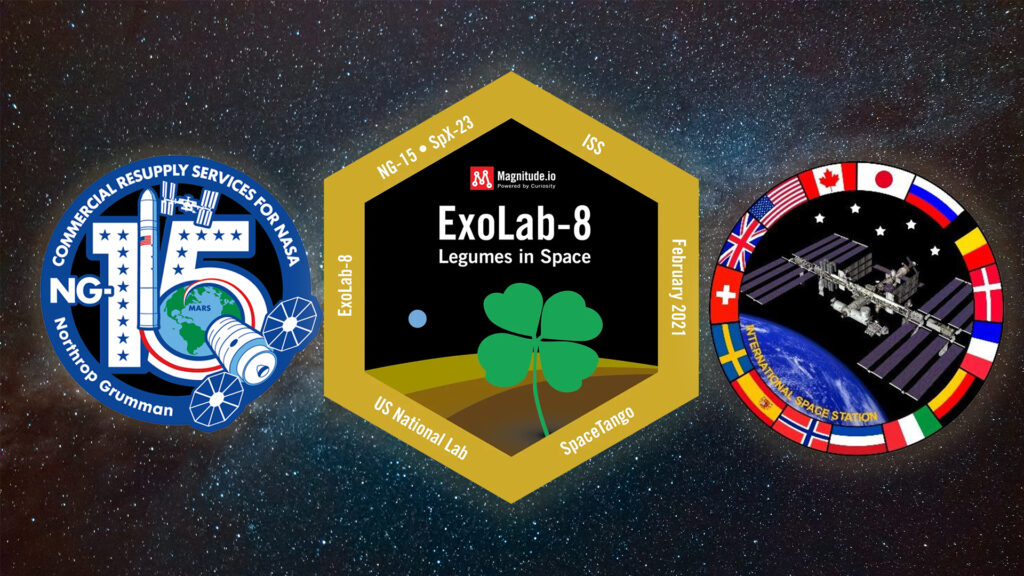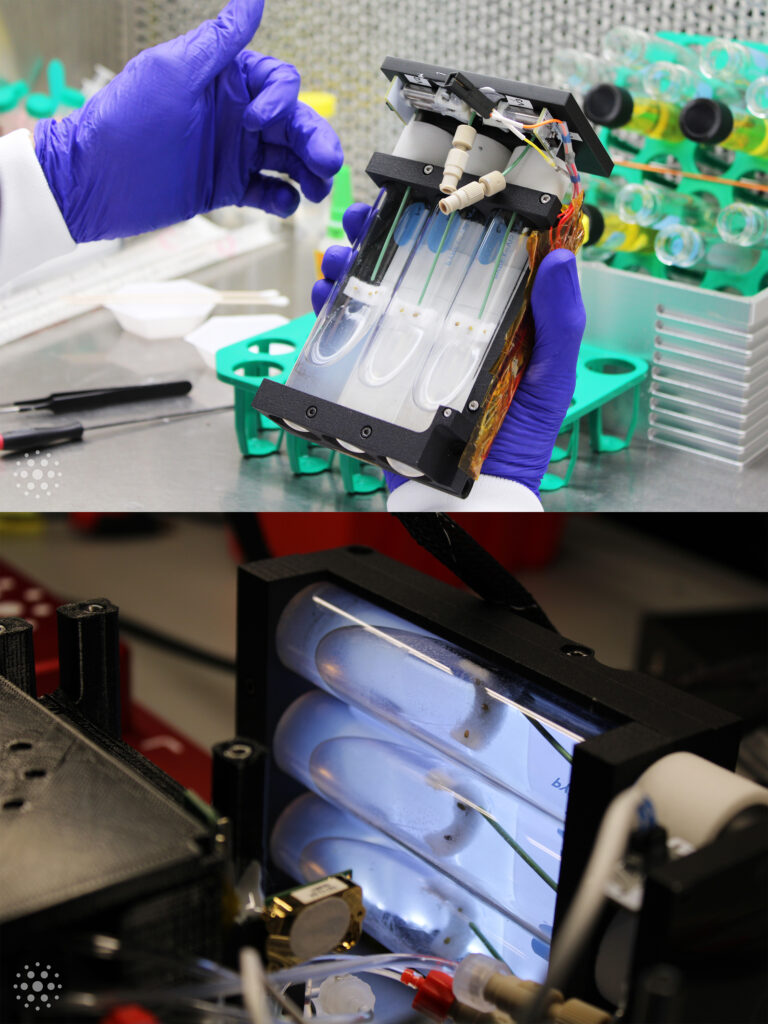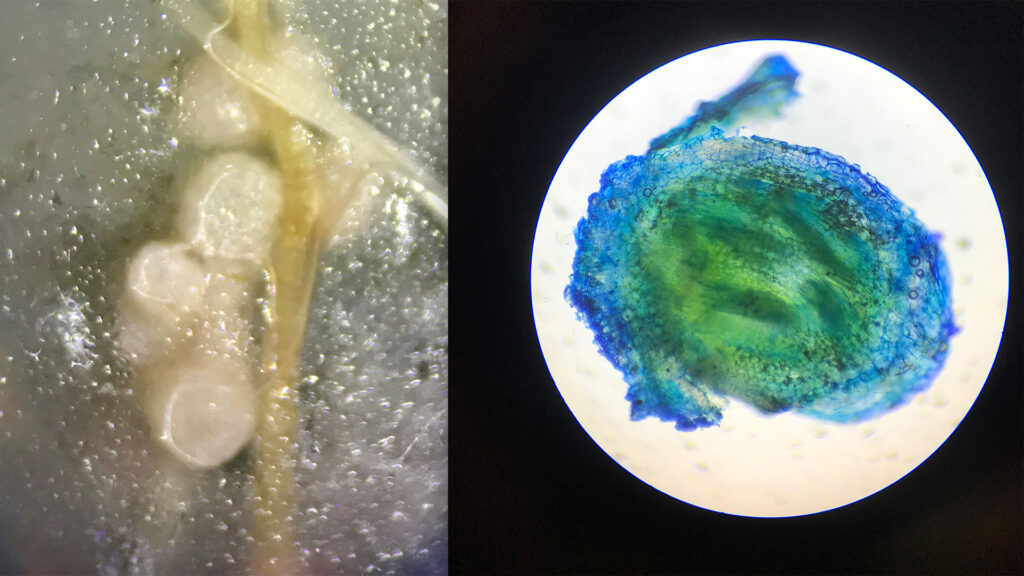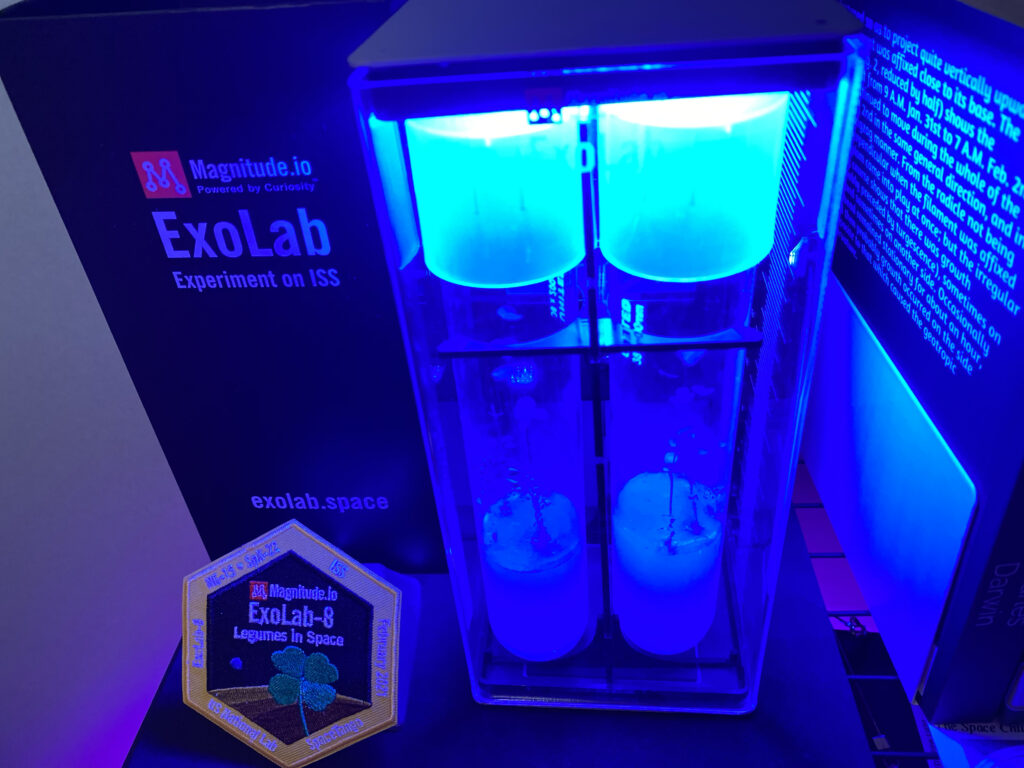Clovers in Space: ExoLab-8 Mission

ExoLab-8 Mission
The next Cygnus launch aboard the Antares rocket is scheduled for February 20, 2021 at 12:36 p.m. ET, from the Mid-Atlantic Regional Spaceport (MARS) Pad 0A on Wallops Island, Virginia. This resupply mission, known as Cygnus NG-15, will deliver approximately 3,279 kg of cargo to the International Space Station. Part of the NG-15 cargo will be Magnitude.IO’s ExoLab-8 experiment.
The ExoLab-8 mission will investigate how the stress of spaceflight affects the symbiotic relationship of a legume (red clover) and nitrogen-fixing Rhizobia bacteria. As a demonstration project, the goal is to achieve root nodulation on red clover for the first time in the microgravity environment of the ISS within the Space Tango CubeLab, relying on an autonomous system that initiates germination and fixes the plants while in orbit. This novel experiment will illuminate integral aspects related to the development of long-term bioregenerative life-support systems to be used in future space missions, as well as in terrestrial agriculture.

The ExoLab-8 research team is composed of scientists, researchers, and educators from the US, Canada, and Japan. This experiment will be conducted alongside a fleet of ground trial replicant experiments carried out by students, educators and citizen scientists around the world!
Exolab-8 clover specimens will return to Earth for analysis in spring 2021.
Let’s Grow Clovers in Space!

Clover and Nitrogen Fixing Bacteria
Clovers are legumes, which are part of the Leguminosae family of plants. Legumes have a symbiotic relationship with a specialized soil bacteria called rhizobia. This interaction results in the bacteria taking nitrogen from the atmosphere and converting it into a form that plants can utilize for protein synthesis. Rhizobia infect the roots of legume seedlings and the plant responds by creating cysts-like nodules. It is in these nodules that atmospheric nitrogen is converted into ammonium, which the plant can utilize in the synthesis of compounds needed to grow. In exchange, the plant provides the bacteria with glucose, the sugar produced in photosynthesis, that the bacteria use for energy. Nitrogen fixation is essential to life because fixed inorganic nitrogen compounds are required for the biosynthesis of all nitrogen-containing organic compounds, such as amino acids and proteins, and nucleic acids. In addition, this natural process is one that significantly reduces the need for fertilizers as it provides the much needed nitrogen to legume crops as well as enriches the soil they are growing in.
One of the key factors in a sustained human presence in space is access to nutrient rich foods. The nitrogen fixing process between rhizobia and legumes such as beans, peas, lentils, clover, and alfalfa; could potentially serve in not only facilitating in the growth of nutrient dense space crops, but also enriching the growth media it is cultivated in. This enriched media would then be able to sustain more nitrogen intensive crops such as grains, fruits, and vegetables. Discoveries into the utilization of this symbiotic relationship in inhospitable space environments is also able to be applied to more sustainable agriculture on Earth as well as the recovery of nutrient depleted soils.

Microscopic Cross-Section of Clover Root Nodule (400x Methelyne Blue Stain)
Student Engagement
With a shift to distance learning as a result of the COVID-19 pandemic, Magnitude.io expanded participation to this mission to enable thousands of students and educators to participate from their classrooms, lab spaces or homes. Mission participants will be growing ground control plants through individual student kits as well as through the ground companion ExoLab. The classroom version ExoLab uses a 2U device that enables participants to monitor environmental conditions, including temperature, humidity, CO2, and luminosity. Additionally, images are taken hourly. Through the Magnitude Classroom, participants learn about conducting science experiments in space and the biology of plants. Additionally, they can analyze the data and images from the classroom ExoLab and do a side-by-side comparison with the CubeLab containing the flight experiment aboard the ISS. For more information on how to take part of this mission program, visit https://magnitude.io/

